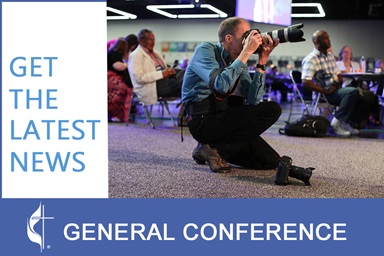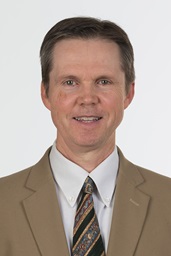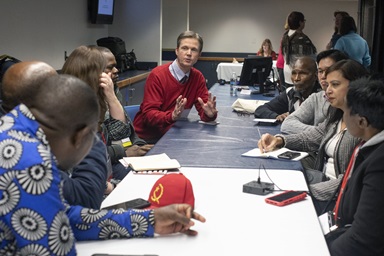Bishops in the South Central Jurisdiction, when they met earlier this summer, sounded the alarm about trends of aging clergy, fewer young clergy and shrinking church membership in their region.
The South Central Jurisdiction encompasses the states of Arkansas, Kansas Louisiana, Missouri, Nebraska, New Mexico, Oklahoma and Texas.
The college of bishops — that is, all the bishops in the jurisdiction — held their annual “Bishop’s Week” at White’s Chapel United Methodist Church in Southlake in the Dallas-Fort Worth metroplex. The bishops met by themselves June 17-19, and on June 20-21 they were joined by members of their extended cabinets and invited laity and clergy. Altogether, the gathering drew about 200 people from the jurisdiction’s 15 annual (regional) conferences.
This year, the focus was on “greater awareness of clergy development systems; clergy trends; collaboration between cabinets, staff and boards; and permission to experiment and improve.”
Before the meeting, each conference received data on the jurisdiction’s clergy and local churches that they were asked to analyze.
Call to foster clergy excellence
The data, provided by the Lewis Center for Church Leadership at United Methodist Wesley Theological Seminary, revealed that as of 2012 only 5.6 percent of United Methodist elders in the United States were younger than 35. That’s 930 elders in total.
Bishop Janice Riggle Huie of the Texas Conference opened the June 20-21 session with a call for fostering clergy excellence. She is a former president of the denomination’s Council of Bishops.
In 2012, the Texas Conference had the highest percentage of young elders among U.S. conferences, with 9.5 percent of its elders — 41 in all — under 35. Still, Huie said, in her conference young pastors are so rare that they are referred to as “spotted owls.”
She described the historical pipeline that furnished clergy to The United Methodist Church – starting with church youth groups and conference camps, moving through college campus Wesley Foundations and on to seminaries. Once graduated from seminary, young pastors traditionally have been appointed to a small church and moved up to larger and larger congregations, gaining experience and maturity along the way.
That pipeline has “dried up,” Huie said, calling young pastors an “endangered species.”
‘Excessive caretaking’
Drawing on Yellowstone National Park as an example, she urged attendees to view clergy excellence as an ecosystem that must be tended.
Park rangers now understand that balance in the ecosystem is critical for survival, she said. Naturally ignited fires can be a beneficial event in the life of a forest; conversely, the decline of wolves held devastating consequences on many elements of the animal ecosystem in Yellowstone.
Huie likened fire and wolves to the ecosystem of clergy excellence and offered two examples of our “excessive caretaking.”
First: incoming pastors who may not be capable of helping “reseed the church for the next generation.”
Second: protecting clergy in the system who “cannot serve effectively or fruitfully.”
The result is an ecosystem that is out of balance and unsustainable. “What needs to be introduced or changed to tilt your ecosystem toward health?” she asked.
Her conference already is proposing a dramatic change aimed in part at increasing young clergy. This spring, the conference’s board of ordained ministry proposed changing its minimum standards for clergy to discourage people over 45 from becoming candidates for ordained ministry.
The conference’s board of ordained ministry is seeking feedback through September this year and does not plan to make any final decision on its standards until October.
‘Challenges and opportunities’
Bishop Michael McKee of the North Texas Conference called the data shared at the gathering a wake-up call. He was one of three bishops elected in the jurisdiction last year.
“I am certain that every lay and clergy person present at Bishop’s Week left with an understanding of the challenges and opportunities before us,” he said.
“The leadership of the North Texas Conference was aware of these challenges and opportunities to provide effective and fruitful leadership in the mission field. Now we have a common language, and we are committed to identifying and inviting persons to consider ministry. Additionally, we are committed to the ongoing work of nurturing and forming clergy for effectiveness.”
The Lewis Center data also showed a 25 percent decline in the jurisdiction’s congregations averaging 100 or more in worship — a loss of 414 churches over 10 years.
Churches averaging 99 people or fewer in worship now make up 76 percent of congregations, up from 72 percent over the decade.
Members of the South Central Jurisdiction have been at the forefront of calling for change to address declining U.S. membership. The jurisdiction has counted among its members many of the reformers who supported plans to restructure denominational agencies and eliminate guaranteed appointments for elders. The Judicial Council, the denomination’s top court, ruled last year that the General Conference-approved legislation to carry out these efforts did not pass muster under the denomination’s constitution.
Guest preachers for the South Central Jurisdiction gathering included Bishop Gregory Palmer of the Ohio West Conference and Bishop Debra Wallace-Padgett of the North Alabama Conference. Both pushed those in attendance to think and reach. In addition to Huie, presenters included Bishops Robert Schnase, Robert Hayes, Gary Mueller, Mike Lowry, Scott Jones and James Dorff.
*Arnold is the director of communications of the Texas Annual Conference. Patterson is communications officer of the North Texas Annual Conference.
Like what you're reading? Support the ministry of UM News! Your support ensures the latest denominational news, dynamic stories and informative articles will continue to connect our global community. Make a tax-deductible donation at ResourceUMC.org/GiveUMCom.



